Best Motherboards for $100-$200, April 2013
by Ian Cutress on April 18, 2013 10:00 AM EST- Posted in
- Motherboards
- Guides
- AMD
- Intel
- Product Recommendations
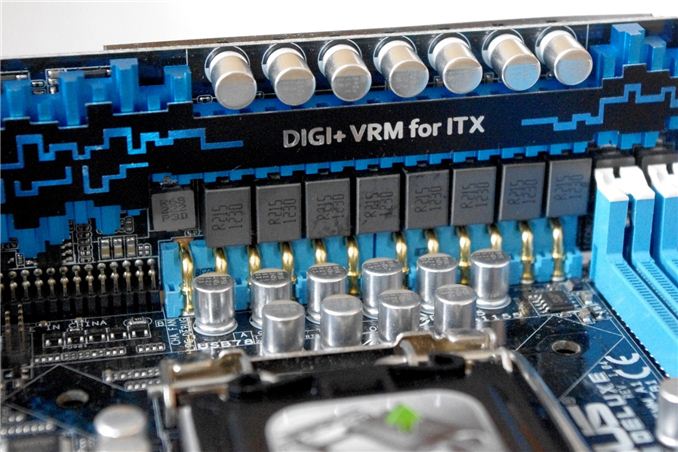
A quick look at the motherboard market and there is plenty to choose from under the $200 mark from both Intel and AMD. For Intel this marks the mid range Z77, whereas we can cover the whole of FM2 with AMD. Below $100 of course we get to the cheap-as-chips range of products, whereby selection can be purely based on what features (HDMI, PCI, two PCIe slots) are on the board.
The cheaper a board is, unfortunately, the less likely we are to review it. The sad truth is that motherboard manufacturers want to put their best foot first, which means driving attention to the top of the range, giving their products the best possible light (even if my analysis leaves it dead in the water in the face of competition). Luckily there have been a good number of boards in the $100 to $200 range that have passed my eyes in the past year, and here are some of the best.
Pick of the Range: ASUS P8Z77-I Deluxe ($185) – AnandTech Bronze Award
At the turn of the New Year, we published an extensive review of the five main mini-ITX boards on the Z77 platform, from ASUS, ASRock, MSI, EVGA and Zotac (we looked at the Gigabyte H77 earlier in 2012). Out of the list we gave ASRock a recommendation but an award went to the ASUS. The P8Z77-I Deluxe was designed the right way for where all the connectors are offers a lot more in the package than the others, such as an Intel NIC, additional USB 3.0, integrated WiFi and that odd looking daughter board for the VRM, allowing the PCB to free up some space. The ASUS P8Z77-I Deluxe was the best performing mITX board from the bunch, along with the best software and BIOS package, not to mention features like BIOS Flashback. The ASUS P8Z77-I Deluxe is innovative in its VRM solution, paving the ground for the future.
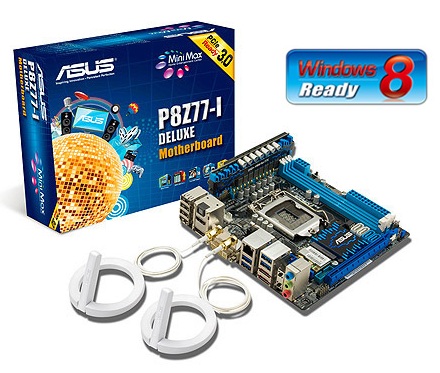
Read our review of the ASUS P8Z77-I Deluxe here.
AnandTech Bronze Award: Gigabyte Z77X-UD5H ($175)
One Gigabyte tactic (of late) is to take its motherboard lineup and attempt to push it down one price point. Here steps in the Z77X-UD5H - on paper it has a range of included extras such as dual NIC, extra SATA 6 Gbps ports, three-way PCIe 3.0 GPU gaming without a $30 expansion chip, an mSATA port, TPM, up to ten USB 3.0 ports and a full range of video outputs, all in a $180 (MSRP $200) bundle. Competition at this price point comes from the ASUS P8Z77-V LE Plus, the ASRock Z77 Extreme6, the MSI Z77A-GD65, Gigabyte’s own G1 Sniper M3, and a for a little more, the ASUS P8Z77-I Deluxe and Maximus V Gene. Performance wise, the Z77X-UD5H gets a high grade across the board. It benefits from having MultiCore Enhancement, pushing the board in CPU related benchmarks. IO benchmarks are mid range, reaching the upper echelons on occasion. The Gigabyte Z77X-UD5H comes with a three-year warranty in North America, and for an extra $30 comes with an included WiFi card and antenna in the form of the Z77X-UD5H-WB WiFi. Overall, the Z77X-UD5H lights up the $175-180 price point like a beacon and is placed well for significant sales.
Read our review of the Gigabyte Z77X-UD5H here.
Recommended: Gigabyte F2A85X-UP4 ($120)
While $120 is on the high end for an FM2 motherboard, my motherboard of choice in this category is the F2A85X-UP4 from Gigabyte for a simple reason – during testing, I did not write down a single issue about it. The system just worked without issue during our testing suite. Normally I write at least something down (software failure, BIOS issue), but not so here. The F2A85X-UP4 brings a little more to the Trinity platform than some of its competition, such as PowIRStage IR3550 ICs which have higher efficiency and run cooler than the previous premium power delivery ICs. Design wise we have enough PCIe slots for three GPUs in CrossFireX (no SLI, not certified), seven SATA 6 Gbps ports on board, a TPM header, DualBIOS methodology, power/reset buttons, a debug LED, the Realtek ALC892 audio codec and a Realtek 8111E NIC. Two extra USB 3.0 ports are also supplied through an Etron EJ168 controller. In terms of performance, the Gigabyte F2A85X-UP4 sits well with the rest of the pack of FM2/A85X boards reviewed. The place it really excels seems to be in terms of power usage at idle, during CPU load and during dual GPU gaming. While it the UP4 does not surpass any of the competition for performance (some would argue it is at a lower price:performance ratio), it falls into the category of a rare board that passes my desk without any serious issues, and it should be seriously considered as a reliable purchase.
Read our review of the Gigabyte F2A85X-UP4 here.
Recommended: ASRock Z77E-ITX ($140)
Our last board to recommend is the one that finished second in our Z77 mini-ITX review. Now down to a remarkable $140, it hits the price:performance ratio of mITX and Intel spot on. The ASRock Z77E-ITX was pretty middle of the pack in performance, but it comes with a good feature set (WiFi, mSATA, six USB 3.0) and software stack (XFast). The placing of the mSATA on the rear of the motherboard is innovative in the desktop computer space (although the norm in laptops), but I think it is great – now my father has a mITX motherboard which he will not be able to destroy a SATA drive by forcefully removing a locking cable!
Read our review of the ASRock Z77E-ITX here.
We Miss AMD
I apologize for not covering more AM3+ motherboards in the past 12 months; demand from manufacturers has mostly been Intel or one a piece from FM2, leaving our last 990FX review back in April 2012, covering ASUS, Gigabyte, MSI and Biostar. AMD has not been keen to refresh beyond 990FX, and while a few new motherboards have been released (ASRock 990FX Extreme9, ASUS 990FX Sabertooth GEN3/R2.0), requests for them have been few and far between, compounded by the fact that manufacturers want other more popular brands to be shown in reviews.
In the future we will get Richland processors, but these will fit directly into FM2 motherboards – meaning that I fear we are probably not due a motherboard refresh any time soon. There may be renewed interest in mainstream AMD if you believe a second line of Vishera CPUs are to be released in 2013 (also recent talk about a 5GHz Centurion CPU). After this online reports suggest we are expecting Steamroller CPUs to replace Piledriver/Vishera in 2014 as well as Kaveri APUs to replace Richland in late 2013/Q1 2014. Steamroller should, as we all wait with fingers crossed, update the 990FX platform, though nothing official has been announced (with 1090FX rumors dating back to 2011).
What To Look Forward To
Smaller and cheaper motherboards are going to become the norm for mainstream users – with the internet in your pocket the days of the bulky system under the desk are going away, and cloud services are bringing performance via a cable rather than localized silicon. There is still a market for the high end, but the mid-range is going to be a tough battle from all manufacturers to get your wallet.
Haswell is going to be a big battleground for this, and I am going after more mATX and mITX boards for future reviews at AnandTech. We have also had requests in for B- and Q- chipset models, which should also populate several reviews this year.
The next motherboard recommendation guide is going to focus on the six core specialty range, Sandy Bridge-E and X79. If you want pure throughput, in most scenarios and with deep wallets, X79 is the way to go (of course Piledriver has some advantages) and we have covered quite a few of the main motherboards available. Stay tuned for our recommendations.









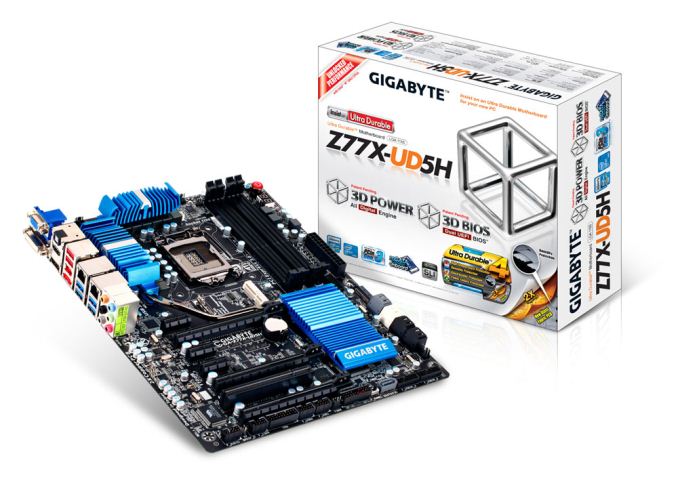






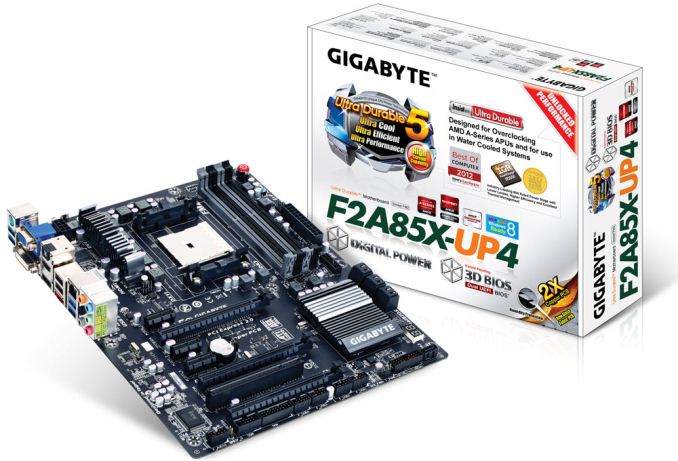




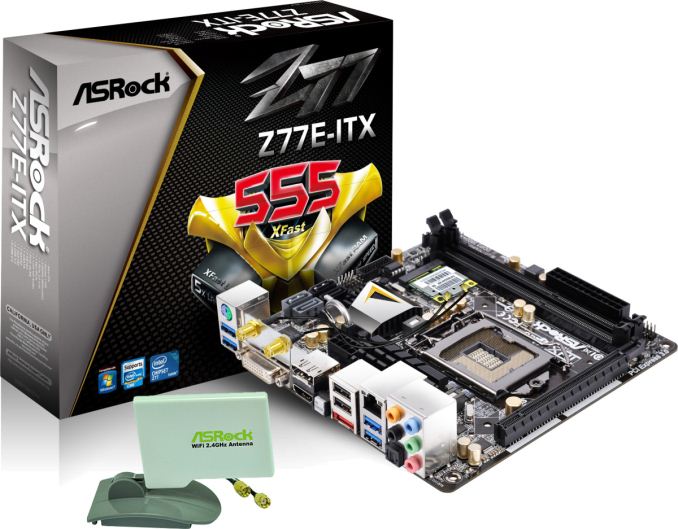














25 Comments
View All Comments
Metaluna - Thursday, April 18, 2013 - link
It's amazing how even a 2.5" SSD can seem huge when you're trying to cram it into an SFF case and route cables. Then there's "Thin mini-ITX" which is even more cramped.gmallen - Thursday, April 18, 2013 - link
A major problem with Anandtech and other review sites is their inability to purchase hardware on their own. Mr. Cutress excuses his lack of FM3+ boards with this: "demand from manufacturers has mostly been Intel or one a piece from FM2." Meaning Anandtech (and others) are dependent on the very companies whose products they are reviewing. Thus, I cannot base purchases on reviews so tied to manufacturers marketing policies.kamm2 - Thursday, April 18, 2013 - link
The reviewers on Anandtech have had no problems voicing concerns and writing negative reviews. It would be nice for them to buy some boards if they think there is a gap in the reviews but relying on manufacturers to supply products is common. Feel free to look at more than site to research purchases (as I do) but Anandtech should be at the top of the list. By the way, I have been using an Asus P8Z77-V LE since September and it has worked flawlessly.IanCutress - Thursday, April 18, 2013 - link
Manufacturers will often (eventually) send me a motherboard if I ask for it. Of course we are a media outlet, so the importance of getting the most up to date and innovative products is vital, as well as the controversial ones. At the high end there is a sufficient spread of differentiation. The lower you go, the more the same it gets due to cost limitations and fighting the smallest of margins. I will always point out issues and problems to both manufacturers and readers, whether the manufacturers like it or not. Obviously from time to time that may have some implication, but we reserve the right to come to our conclusions given sufficient experience and a whole raft of tests - our conclusions are the result of testing, research and a scientific background helps.When it comes down to it, it's a mix of what manufacturers want us to review and what I request. We have no trouble obtaining the former, and the latter might take a little longer. But if you want to see certain products reviewed, please get in touch and I with enough interest I will request a sample. Hence the striving for more mATX and B-/Q- chipsets post Haswell launch, as well as our recent foray into some server/workstation motherboards.
On a side note, I have no dealings with any marketing. We have a separate team for that, and neither side tells the other side how to do their job.
Ian
A5 - Thursday, April 18, 2013 - link
I'm excited to see more mATX reviews going forward. Like right now MSI, ASRock, and Gigabyte all have $110 mATX that are pretty similar and have all the basic features anyone needs.Even just a note saying "stay away from brand X because their BIOS interface is bad" would be a big help if you don't have time for a full review.
gmallen - Friday, April 19, 2013 - link
For me, any approach other than Consumer Reports' no ads, no free testing samples is tainted. I did not mean to suggest that Ian is swayed by any manufacturer, and I apologize for my poor writing skills if I did so. By marketing policies, I meant the manufacturer who clearly chooses which boards to send as part of a marketing policy.Still, Caesar's wife must remain pure and I refrain from giving credence to any ad-supported, manufacturer sample approach.
Donkey2008 - Friday, April 19, 2013 - link
ROLMAO. You mean the same organization that said that one on the cons of owning a Jeep Wrangler was the wind noise when the top was off? CR has no credibility.anubis44 - Saturday, April 20, 2013 - link
Well, that would be a con, even if you think it would be self-evident, the point of Consumer Reports is to brief people on products they don't own yet. It therefore makes sense to point out that if you bring the top down on a Jeep, one thing you'll notice is the extra wind-noise. Perhaps it was poorly designed and produced even more wind noise than usual for a convertible? There are many possibilities.HisDivineOrder - Thursday, April 18, 2013 - link
I'm not sure I see the need for BOTH mITX and mATX. One of them has to go. Personally, I think it should be ITX. The niche that ITX fills will soon be fully and completely filled by NUC-like devices that are even smaller.Meanwhile, at least mATX offers you most of what you get from ATX. ATX will stick around for one reason: SLI/Crossfire. Especially of the tri and quad variety. As long as GPU's remain internal, ATX has a place, even if its a niche one. But for the enthusiast, ATX will continue to be the best as long as external GPU's remain a vague hope.
I think NUC is the future of PC gaming in the longest long term. I think Intel is going to keep improving that integrated GPU, I think games based on even the next gen consoles are going to be way outclassed by PC hardware rather rapidly (and mostly are now), and I think Intel's going to keep ticking on that integrated GPU until it beats AMD's as soundly as the CPU part does.
And I think all those reports about Intel not releasing a user-installed version of Broadwell is going to be Intel essentially making the argument that Haswell -> Broadwell is mostly about integrated GPU and power reduction, neither of which impacts the desktop market in any significant way. They'll argue that few upgrade from SB to IB, so few would go from Haswell to Broadwell. And they'll do to the mainstream what they've already done with the enthusiast chips (SB-E to IB-E) and do an update every two years or so.
This will have the net effect of putting the SOC's and NUC's into a more rapid update schedule than the conventional motherboard and CPU, which eventually will make them so out of date that even the enthusiast will just accept the SOC's and NUC's of the world as superior because they WILL be superior by then.
And then one day, quietly, they'll announce the death of the user-installed CPU like they announced the death of their hardware division six months back. A few of us old timers will be sad, but most will just shrug and say, "Who cares? Look how fast what we got is!"
That's how you make big changes. So slowly yet smoothly, even Harry Houdini would be proud of how easily you adjusted from warm to cold.
thesavvymage - Thursday, April 18, 2013 - link
personally, I think ATX should go. many mATX support crossfire/sli. itx is valuable for very compact gaming rigs (lan parties, etc). However, regular ATX doesnt really offer an advantage over mATX. For someone who is serious about tri or quad crossfire/sli, they will spring for the xl-atx boards.I think itll whittle around to this:
xl-ATX: extreme enthusiast builds with tri or quad sli/crossfire
mATX: everything from budget to enthusiast builds capping out at two graphics cards
ITX: extremely compact builds
The only benefit over mATX i see that ATX has is that you can have sli/crossfire and also have a sound card.